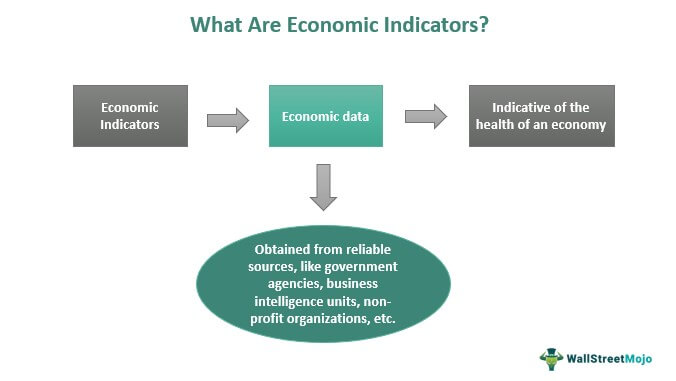
Economic indicators are statistics that measure the performance of an economy. They are used to track economic growth, inflation, employment, and other important economic variables. Economists and policymakers use economic indicators to make decisions about fiscal policy, monetary policy, and other economic policies.
There are many different types of economic indicators. Some of the most important economic indicators include:
- Gross domestic product (GDP) is the total value of all goods and services produced in a country in a given year. GDP is a measure of the size of the economy and is used to track economic growth.
- The unemployment rate is the percentage of the labor force that is unemployed. The unemployment rate is a measure of the health of the labor market and is used to track employment trends.
- The inflation rate is the rate at which prices for goods and services are rising. Inflation is a measure of the cost of living and is used to track the purchasing power of consumers.
- The stock market is a market where shares of companies are bought and sold. The stock market is a measure of investor confidence and is used to track economic expectations.
- Interest rates are the prices that borrowers pay to lenders for loans. Interest rates are a measure of the cost of borrowing money and are used to track monetary policy.
Economic indicators are important because they provide information about the state of the economy. This information can be used to make decisions about fiscal policy, monetary policy, and other economic policies. For example, if GDP is growing slowly, policymakers may decide to increase government spending or cut taxes in order to stimulate the economy. If the unemployment rate is rising, policymakers may decide to lower interest rates in order to make it easier for businesses to borrow money and hire workers.
Economic indicators are not perfect. They can be noisy, meaning that they can fluctuate for reasons that are unrelated to the underlying health of the economy. They can also be delayed, meaning that they may not reflect changes in the economy until after the fact. Despite these limitations, economic indicators are an important tool for understanding the economy and making economic policy decisions.
Types of Economic Indicators
Economic indicators can be classified into three categories:
- Coincident indicators change at the same time as the economy. They are used to measure the current state of the economy. Examples of coincident indicators include GDP, employment, and industrial production.
- Leading indicators change before the economy. They are used to predict future economic conditions. Examples of leading indicators include stock prices, consumer confidence, and housing starts.
- Lagging indicators change after the economy. They are used to confirm changes in the economy. Examples of lagging indicators include the unemployment rate, inflation, and the trade balance.
How to Use Economic Indicators
Economic indicators can be used to track the performance of the economy, to predict future economic conditions, and to make economic policy decisions.
To track the performance of the economy, economists and policymakers look at a variety of economic indicators. For example, they might look at GDP growth, the unemployment rate, and inflation. By tracking these indicators, they can get a sense of how the economy is doing and whether it is growing, shrinking, or staying the same.
To predict future economic conditions, economists and policymakers use leading indicators. Leading indicators are economic indicators that change before the economy. By looking at leading indicators, economists and policymakers can get a sense of what the economy might do in the future.
To make economic policy decisions, economists and policymakers use a variety of economic indicators. For example, they might use GDP growth, the unemployment rate, and inflation to decide whether to raise or lower interest rates. They might also use leading indicators to decide whether to increase or decrease government spending.
Conclusion
Economic indicators are an important tool for understanding the economy and making economic policy decisions. By tracking the performance of the economy, predicting future economic conditions, and making economic policy decisions, economists and policymakers can help to ensure that the economy is strong and healthy.thumb_upthumb_downuploadGoogle itmore_vert


